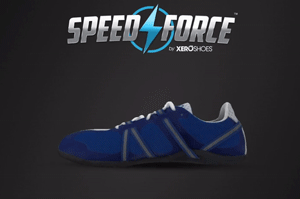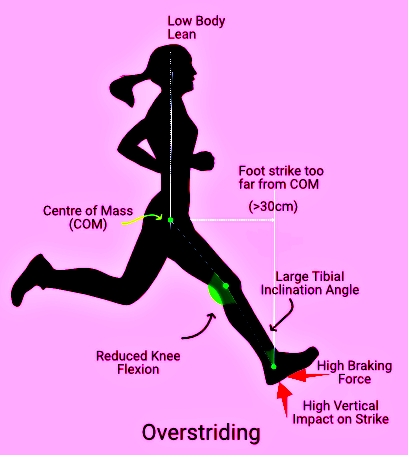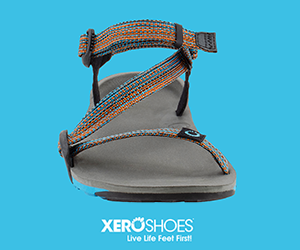How you land on your feet when you run has a direct influence on shin splints whereby landing heel-first produces multiple mechanical actions that increases shin-damaging impacts that are not just prevented, but improved with forefoot striking.
In fact, a study by Vitasalo and Kvit in the American Journal of Sports Medicine provides snapshots from what a large growing body of evidence is telling in that there are 2 major mechanical components of the heel strike running that are responsible for shin splints: a low angular displacement of the Achilles tendon before touchdown (i.e. a longer over-reach of the foot at landing, also known as an over-stride) and a longer duration of pronation (foot grapples too much with the ground) during stance.


The researchers found that healthy endurance runners had a longer angular displacement value of the Achilles tendon prior to ground contact, which means stride was shorter, which also enabled the torso, which is the center of mass, to shift more anterior to the foot before the touchdown phase. What this is means is the foot landed closer to the hips, which also helps minimize the brake force.
In contrast, runners with a history of shin splints who were also heel strikers had a shorter angular displacement value of the Achilles tendon upon touchdown, meaning these runners had a longer stride, and the center of mass, or torso, was positioned more behind the foot upon landing. The major downside of this is the farther behind the center of mass at landing when running, the longer the center of mass comes to a crashing halt with the stance leg, thereby prolonged the brake period. This is an unavoidable outcome of landing heel-first when running.


Another contributing factor for running-related shin splints identified in the study was a long pronation period whereby endurance runners with a history of shin splints had a longer pronation duration than the healthy endurance runners. What does this mean? A longer pronation period means the foot spends more time wrestling with the ground, which causes shin splints because it increases stretch and eccentric contractions of the shin muscles. This is always the case with heel strike running because the heel-to-toe action of the foot increases ground contact-time vs forefoot striking which is the opposite action of the foot where the foot follows a forefoot-to-heel movement path, which reduces ground contact-time reducing stress of the shins.
Ultimately, its becoming clearer and clearer that you can spend hundreds of dollars on ‘better’ running shoes, but to truly, reliably and sustainably protect your shins from injury through limiting braking and over-pronation requires a forefoot strike landing not a heel strike and not motion control stability running shoes. This cannot be over-stated enough because forefoot running promotes engagement of more functionally-ordered mechanics that produces less net-impact whereas landing heel-first produces a more intense degrees of impact by pushing your entire body mechanics of out a neutral order.
The facts don’t stop about the injury preventative benefits of forefoot running. Here are all the other injuries caused by heel strike running that are prevented by forefoot running. Read more here on that!
References:
Asmussen, E. Observation on experimental muscle soreness. Acta Rheum Scand 2: 109-116, 1956.
Komi PV and Vitasal JT. Changes in motor unit activity and metabolism in human skeletal muscles during and after repeated eccentric and concentric contractions. Acta Physiol Scand, 1977; 100:246-54.
Komi PV, Viitasalo JT, Vihko V, Rusko H Effects of repeated maximum eccentric and concentric contractions on selected mechanical, electrical and ultrastructural variables in human skeletal muscle Research reports from the Department of Biology of Physical Activity. University of Jyvaskyla,
Finland 1/1974
Vitasalo JT and Kvist M. Some biomechanical aspects of the foot and ankle in athletes with and without shin splints. Amer J Sport Med, 1983; 11(3):125-130.

